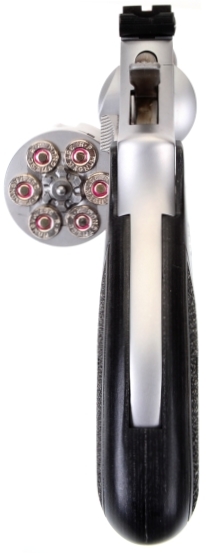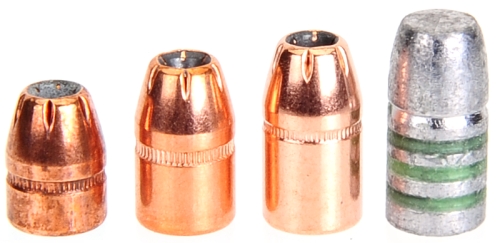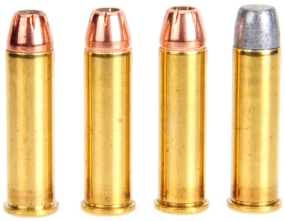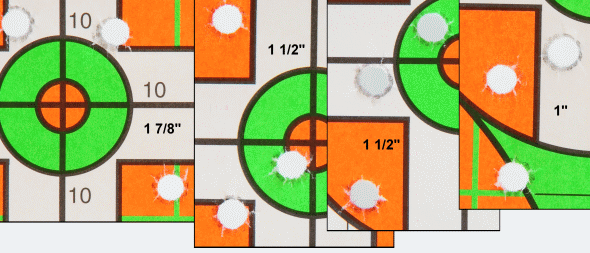
The S&W manual for the Model 686 does not preclude the use of handloading ammunition, but it does so with the caveat that any reloaded or handloaded ammunition be subjected to an internal pressure test to assure it is in compliance with industry standards. The passage goes on to further define the need for quality materials, process and dimensional control. In doing so, they are essentially defining a commercial reloading operation.
The use of the word “internal” in concert with pressure testing is somewhat nebulous as it does not specify internal to the chamber or the cartridge or just a test method that is representative of the chamber and bore pressure. There are pressure checking methods that place a transducer into a hole that passes through the test barrel fixture’s chamber wall and cartridge case with the transducer inside the case when ignited. This type of testing in in the minority.
There are conformal transducer that pass through the test fixture’s barrel and rest compliantly against the outside of the cartridge case and read internal pressure acting against the case wall. There are strain gauges that mount on the surface of the barrel, midway over the chamber, and measure minute dimensional changes that result from pressure created stresses. Software then interpreted this into a psi equivalent.
Why is Smith & Wesson distancing themselves from the average handloaders? Probably because they do not want to assume a liability for the many, many individuals who handload to varying degrees of quality, safety and experience. Considering some of the email I get from handloaders with suggestions and experiences to share, I am surprised S&W even put in an accommodation for commercial reloaders. But I know my work, and we do have good test equipment, so I thought I would add in a handloader perspective.
Handloads even Elvis would have liked…
No, not really. Although Elvis was a big fan of the S&W Model 19 and 357 Mag and some of them were incredible works of engraving art… From 110 grain range load to 190 grain heavy hitter, these handloads are indicative of 357 Magnum and S&W Model 686 performance.

| Bullet | Manufacturer Recommended Application |
Bullet Type |
Weight Grains |
Bullet Length” |
COL” |
| Hornady HP-XTP 35700 | Self Defense/Small Game | JHP | 110 | 0.488 | 1.590 |
| Hornady HP-XTP 35740 | Self Defense/Small & Medium Game | JHP | 140 | 0.601 | 1.590 |
| Hornady HP-XTP 35750 | Self Defense/Medium Game/Silhouette | JHP | 158 | 0.670 | 1.590 |
| Hunter’s Supply – Hard Cast | Medium & Large Game/Silhouette | FP | 190 | 0.756 | 1.590 |
 The game classifications are vague, so lets make small game being rabbit, fox and similar size animals. Medium size game as anything from feral hogs to whitetail deer and big game from larger specie deer, like elk, and on up to moose and larger black bear. Big and dangerous game is something completely different. Folks who shoot hard cast bullets probably know why the Hunter Supply rates their 190 grain bullets for use on big game. They pretty much stay groove diameter and penetrate like crazy within a reasonable range… I’ll say 50 yards. For Internet gun board yards, just multiply by three, for group sizes, divide by three. It is a very flexible and effective round.
The game classifications are vague, so lets make small game being rabbit, fox and similar size animals. Medium size game as anything from feral hogs to whitetail deer and big game from larger specie deer, like elk, and on up to moose and larger black bear. Big and dangerous game is something completely different. Folks who shoot hard cast bullets probably know why the Hunter Supply rates their 190 grain bullets for use on big game. They pretty much stay groove diameter and penetrate like crazy within a reasonable range… I’ll say 50 yards. For Internet gun board yards, just multiply by three, for group sizes, divide by three. It is a very flexible and effective round.
 |
Warning: Bullet selections are specific, and loads are not valid with substitutions of different bullets of the same weight. Variations in bullet length will alter net case capacity, pressure and velocity. Primer selection is specific and primer types are not interchangeable. These are maximum loads in my firearms and may easily be excessive in others. All loads should be reduced by 5%, and developed following safe handloading practices as represented in established reloading manuals produced by component manufacturers. Presentation of these loads does not constitute a solicitation for their use, nor a recommendation.
|
||||||||||||||||||||||||||||||||||||||||||||||||||||||||||||||||||||||||||||||||||||||||||||||||||||||||||||||||||||||||
|
|||||||||||||||||||||||||||||||||||||||||||||||||||||||||||||||||||||||||||||||||||||||||||||||||||||||||||||||||||||||||

It will eventually shoot black…
The Model 686 SSR makes for a nice range day and it comfortable for open carry. We’re getting ready for tree harvesting, so I had a chance to wear it while out for the day checking locations and I had the chance to shoot quite a bit. Light loads are a snap to shoot and the heavier loads are not much more difficult to master. The L frame, six shots and 357 Magnum make for an exceptional combination, exceptional for new handgunners, exceptional for experienced handgunners.

Smith & Wesson’s Model 686-6 357 Mag Part I
Smith & Wesson’s Model 686-6 357 Mag Part II

Email Notification